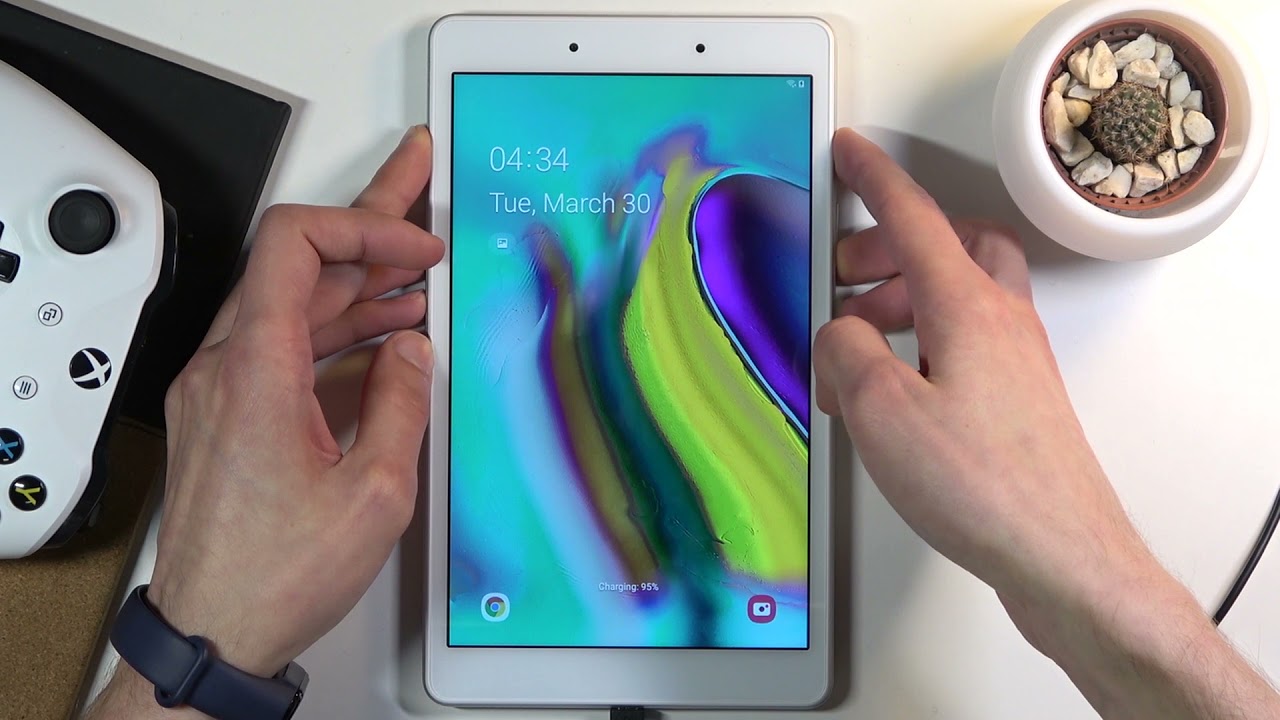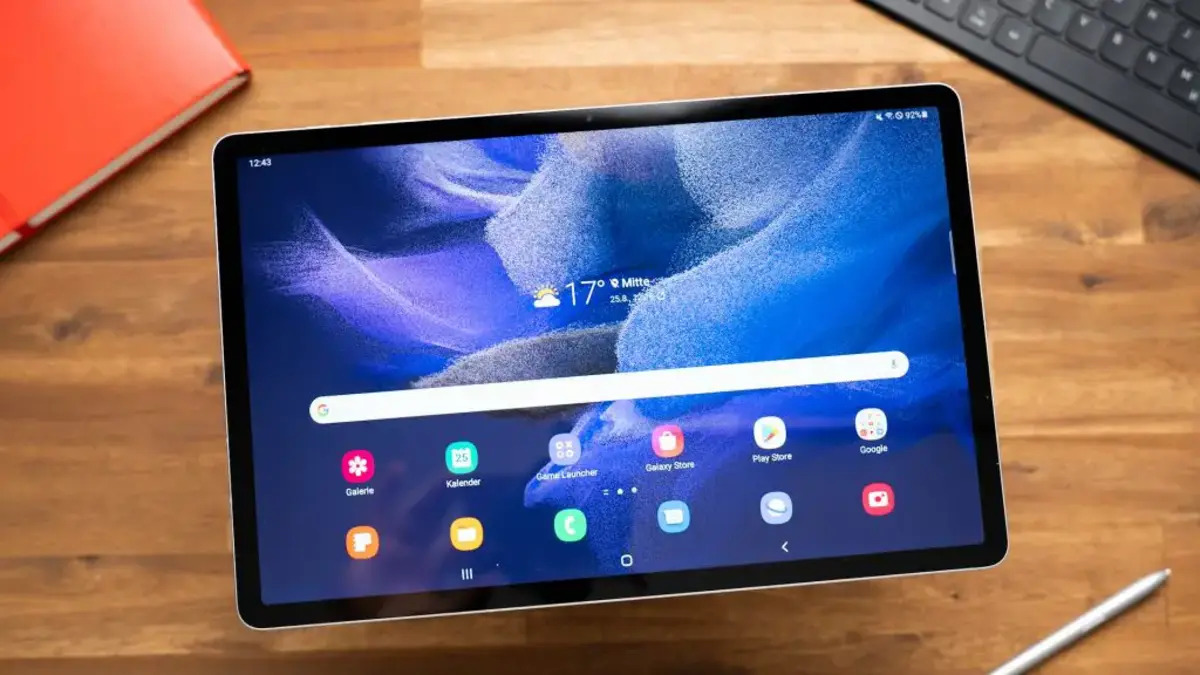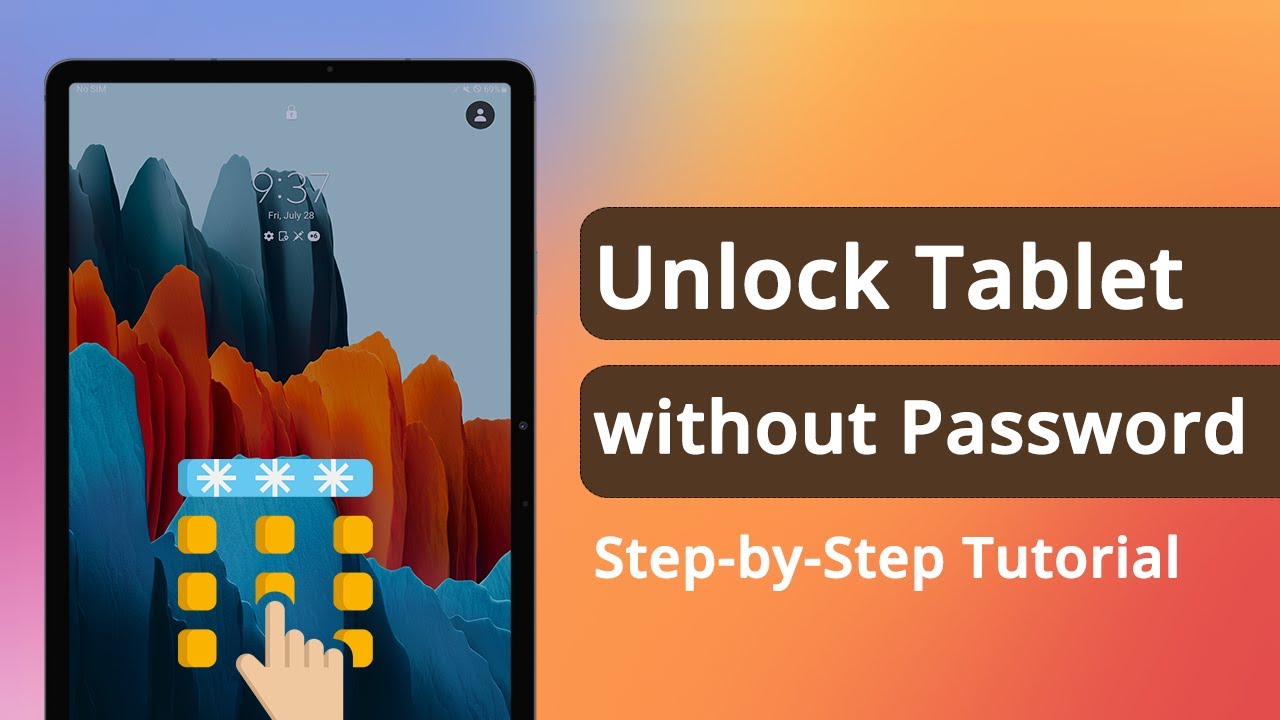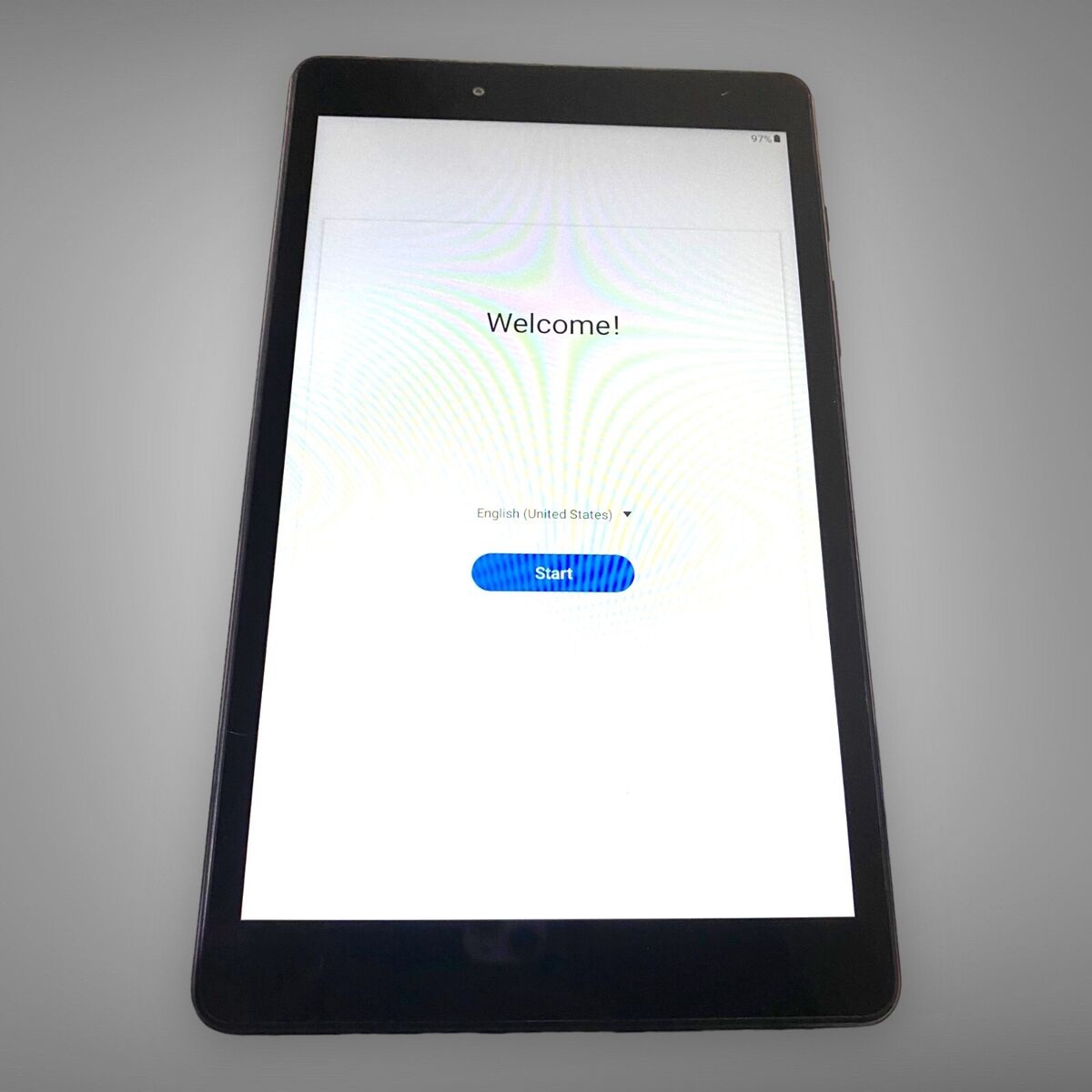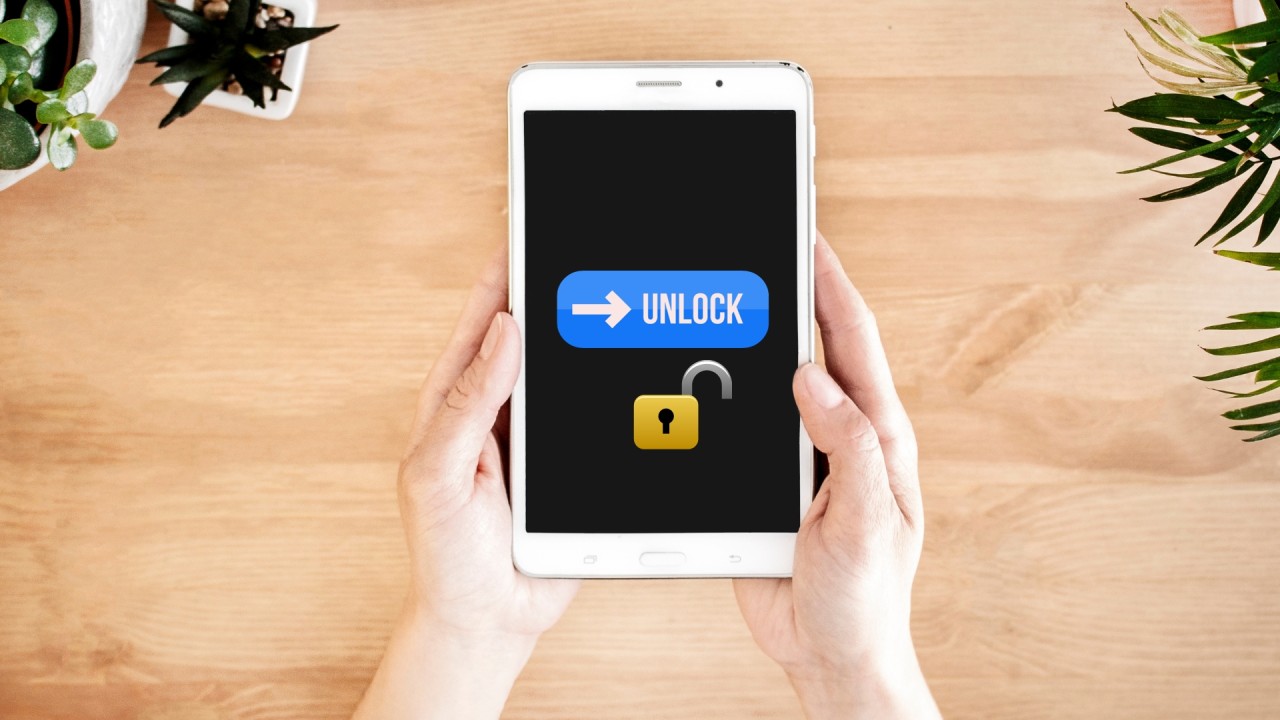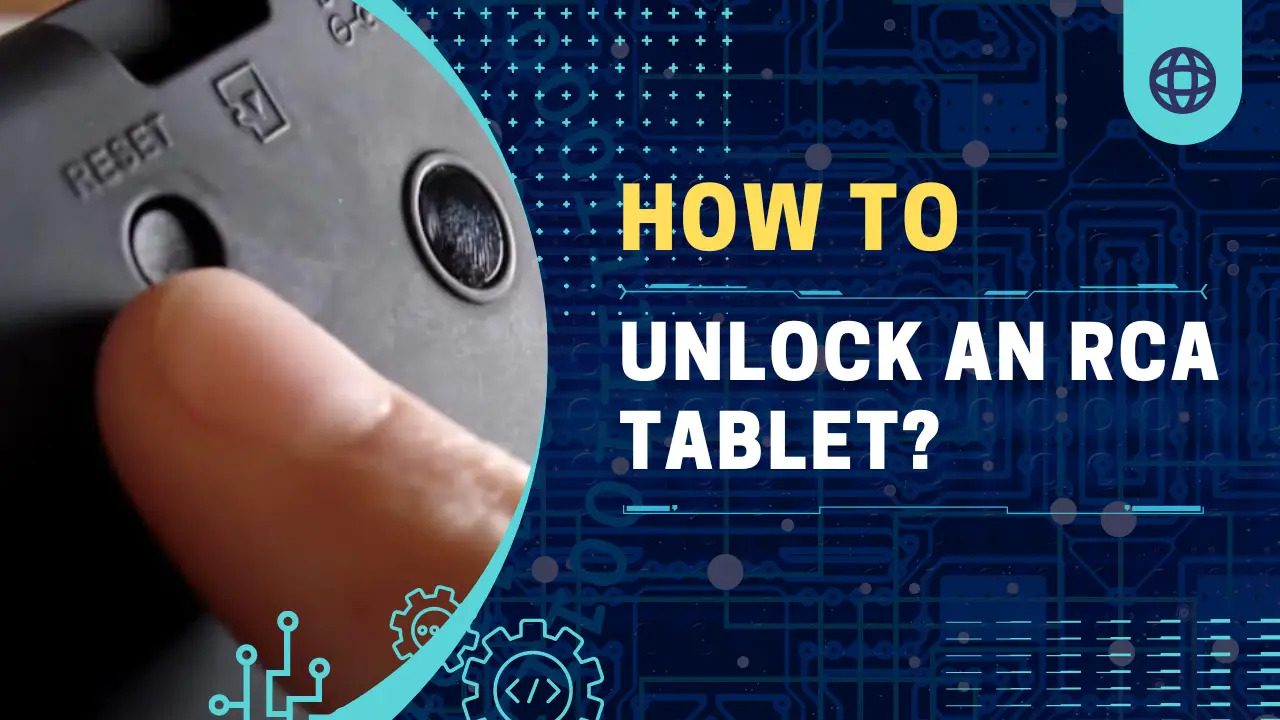Introduction
Welcome to our guide on how to reset an Android tablet without a password. Android tablets have become an essential part of our daily lives, helping us stay connected, entertained, and productive. However, there may be instances where you find yourself locked out of your tablet due to a forgotten password or pattern lock. Don’t worry, as in this article, we will explore various methods to reset your Android tablet and regain access to it.
Resetting an Android tablet can be a useful solution in several scenarios. Perhaps you have purchased a second-hand tablet and want to erase all the previous owner’s data. Or maybe your tablet is experiencing performance issues, freezes frequently, or is infected with malware, and you want to start fresh. Whatever the reason may be, performing a reset can help resolve software issues and restore your tablet to its factory settings.
Before proceeding with the reset, it is important to note that performing a factory reset will erase all data on your tablet. This includes apps, personal files, settings, and accounts. Therefore, it is crucial to back up any important data before proceeding with the reset process.
In the following sections, we will explore five different methods to reset an Android tablet without a password. These methods include using the factory reset option in the settings, utilizing the hardware buttons, using Google Find My Device, employing Android Device Manager, and utilizing third-party software. Depending on your tablet model and Android version, some methods may be more suitable than others. Let’s dive into each method and see how you can reset your Android tablet.
Why Reset an Android Tablet?
Resetting an Android tablet can provide several benefits and serve different purposes. Here are some of the common reasons why you might consider resetting your tablet:
1. Forgotten password or pattern lock: People often set a secure password or pattern lock on their tablets to protect their personal information. However, it is easy to forget these passwords, especially if you haven’t used the tablet for a while. In such cases, a factory reset is often the only way to regain access to your device.
2. Performance issues: Over time, an accumulation of unused apps, cache files, and system junk can slow down your tablet’s performance. It may freeze frequently, lag, or take longer to respond. Performing a reset can help alleviate these performance issues and restore your tablet to its original speed and functionality.
3. Malware or virus infections: If you suspect that your tablet has been infected with malware or viruses, a factory reset can be an effective way to remove them. Resetting the tablet will erase all the malicious files, ensuring a clean and secure device.
4. Selling or gifting the tablet: If you plan to sell or gift your Android tablet, it is important to ensure that all your personal data, accounts, and settings are removed from the device. A factory reset is the best way to wipe the tablet clean and provide a fresh start for the new owner.
5. Starting fresh: Sometimes, you may simply want to start fresh with your tablet, especially if you have been using it for a long time and want a clean slate. Performing a reset will remove all your personalizations and configurations, allowing you to set up your tablet as if it were brand new.
6. Troubleshooting software issues: If you are encountering persistent software issues on your tablet, such as frequent app crashes or system errors, a reset can help resolve these problems. Resetting the tablet will revert it back to its original state, eliminating any software conflicts or glitches that may be causing the issues.
By understanding the reasons why you might need to reset your Android tablet, you can make an informed decision about whether or not to proceed with the reset process. Remember to back up any important data before performing a reset to avoid losing valuable information.
Method 1: Using the Factory Reset Option
The easiest and most common method to reset an Android tablet is by using the built-in factory reset option. This method is available on almost all Android devices and can be accessed through the Settings menu. Here’s how you can do it:
Step 1: Open the Settings app on your Android tablet. You can usually find it in the app drawer or by swiping down from the top of the screen and tapping on the gear icon.
Step 2: Scroll down and tap on “System” or “System & updates,” depending on your tablet’s manufacturer.
Step 3: Look for an option labeled “Reset” or “Reset options” and tap on it. You may need to further navigate through the menu to find the appropriate option.
Step 4: Select “Factory data reset” or “Erase all data,” depending on the available options. Keep in mind that the labels may differ slightly depending on the Android version and device model.
Step 5: Read the warning message carefully, as the factory reset will erase all data on your tablet. Make sure you have backed up any important files or data before proceeding. Once you are ready, tap on “Reset” or “Erase everything.”
Step 6: Your tablet will now begin the reset process, which may take a few minutes to complete. The device will restart, and you will be taken through the initial setup process as if you were using the tablet for the first time.
It is worth noting that the exact steps may vary slightly depending on your Android tablet’s manufacturer and software version. However, the general process remains the same. If you are unable to find the factory reset option in the Settings menu, refer to your tablet’s user manual or visit the manufacturer’s website for specific instructions.
Resetting your Android tablet using the factory reset option is a convenient way to restore your device to its original state. It is recommended to perform a factory reset if you are experiencing persistent software issues, forgot your password, or want to prepare the tablet for sale or gifting. Remember to back up your important data beforehand to avoid permanent data loss.
Method 2: Using the Hardware Buttons
If you are unable to access the settings menu on your Android tablet, or if the tablet is frozen or unresponsive, you can reset it using the hardware buttons. This method allows you to perform a factory reset by booting into the device’s recovery mode. Here’s how you can do it:
Step 1: Power off your Android tablet by pressing and holding the power button until the power options menu appears. Then, select “Power off” or “Shut down” to turn off the device completely.
Step 2: Once the tablet is powered off, press and hold the combination of hardware buttons required to enter the recovery mode. The combination varies depending on the make and model of your tablet. Common button combinations include the volume up/down buttons, power button, and home button. If you are unsure about the specific buttons to press, consult your tablet’s user manual or search online for the correct combination.
Step 3: With the correct button combination held down, press the power button briefly to turn on the tablet. Continue holding the hardware buttons until the tablet enters recovery mode. You will see a screen with a menu of options.
Step 4: Use the volume up and volume down buttons to navigate through the menu options. Look for an option labeled “Wipe data/factory reset” or something similar. Use the power button to select this option.
Step 5: Confirm your selection by highlighting the “Yes” or “Confirm” option and pressing the power button.
Step 6: The tablet will now begin the factory reset process. It may take a few minutes to complete. Once done, you will be taken back to the recovery mode menu.
Step 7: From the recovery mode menu, select the “Reboot system now” option using the power button. The tablet will restart, and you will be taken through the initial setup process.
Using the hardware buttons to reset your Android tablet is a useful method when you cannot access the settings menu. However, it is important to note that the button combinations and navigation in recovery mode may differ for different tablets. If you encounter any difficulties or are unsure of the correct button combination, consult your tablet’s user manual or search online for specific instructions for your device.
Method 3: Using Google Find My Device
If you have linked your Android tablet to your Google account and have enabled the “Find My Device” feature, you can use this method to reset your tablet remotely. Here’s how you can do it:
Step 1: On a computer or another smartphone, open a web browser and visit the Google Find My Device website (https://www.google.com/android/find). Sign in using the same Google account that is linked to your Android tablet.
Step 2: Once signed in, the website will display a map showing the last known location of your tablet, along with several options.
Step 3: Locate your tablet on the map and click on the “Erase device” option. A confirmation dialog will appear.
Step 4: Read the warning message carefully. This action will erase all data on your tablet and reset it to its factory settings. Make sure you have backed up any important files or data before proceeding. Once you are ready, click on the “Erase” button to initiate the reset.
Step 5: Google Find My Device will send a signal to your tablet, and it will perform a factory reset automatically. This process may take a few minutes to complete.
Step 6: Once the reset is complete, your tablet will be unlinked from your Google account, and you will no longer be able to track its location using Find My Device.
Using Google Find My Device to reset your Android tablet remotely is a convenient option if you have misplaced your tablet or if it has been stolen. This method allows you to safeguard your personal data and ensure that it does not fall into the wrong hands. However, keep in mind that this method requires an active internet connection on your tablet and may not work if the device is turned off or disconnected from the internet.
Please note that the availability and functionality of the Google Find My Device feature may vary depending on the Android version and device model. If you cannot locate this feature or encounter any difficulties, refer to your tablet’s user manual or visit the manufacturer’s website for further instructions.
Method 4: Using Android Device Manager
If you have enabled the Android Device Manager on your Android tablet, you can use this method to reset your device remotely. Android Device Manager allows you to track, lock, and erase your tablet from a web browser. Here’s how you can use Android Device Manager to reset your tablet:
Step 1: On a computer or another smartphone, open a web browser and visit the Android Device Manager website (https://www.google.com/android/find). Sign in using the same Google account that is linked to your Android tablet.
Step 2: Once signed in, the website will display a map showing the last known location of your tablet, along with several options.
Step 3: Locate your tablet on the map and click on the “Erase” option. A confirmation dialog will appear.
Step 4: Read the warning message carefully. This action will erase all data on your tablet and reset it to its factory settings. Make sure you have backed up any important files or data before proceeding. Once you are ready, click on the “Erase” button to initiate the reset.
Step 5: Android Device Manager will send a signal to your tablet, and it will perform a factory reset automatically. This process may take a few minutes to complete.
Step 6: Once the reset is complete, your tablet will be unlinked from your Google account.
Using Android Device Manager to reset your Android tablet remotely is a powerful tool if you have misplaced your tablet or if it has been stolen. This method ensures the protection of your personal data and allows you to maintain control over your device. However, it is important to note that this method requires an active internet connection on your tablet and may not work if the device is turned off or disconnected from the internet.
Please note that the availability and functionality of Android Device Manager may vary depending on the Android version and device model. If you cannot locate this feature or encounter any difficulties, refer to your tablet’s user manual or visit the manufacturer’s website for further instructions.
Method 5: Using Third-Party Software
If the previous methods do not work for you, or if you prefer a more comprehensive solution with advanced features, you can consider using third-party software to reset your Android tablet. There are various software applications available that offer device management and reset features. Here’s how you can use third-party software to reset your tablet:
Step 1: Research and choose a reliable third-party software application that is compatible with your Android tablet. Look for software that offers device management, data erasure, and factory reset features.
Step 2: Download and install the selected software on your computer. Follow the provided instructions for installation and setup.
Step 3: Connect your Android tablet to your computer using a USB cable. Make sure USB debugging is enabled on your tablet, which can be done by going to the Developer Options in the tablet’s settings.
Step 4: Launch the third-party software on your computer and follow the on-screen instructions to establish a connection between your tablet and the software.
Step 5: Once the connection is established, navigate to the appropriate section or feature that allows you to perform a factory reset on the tablet. The exact steps may vary depending on the software you are using.
Step 6: Read the instructions and warning messages provided by the third-party software. Ensure that you understand the consequences of performing a factory reset, as it will erase all data on your tablet.
Step 7: Confirm your decision to reset the tablet within the third-party software. The software will initiate the reset process and guide you through the necessary steps.
Using third-party software to reset your Android tablet can provide additional functionalities and a more user-friendly interface. However, it is important to choose reputable software and follow the instructions carefully. Some popular third-party software options include Dr.Fone, Mobiledit, and iMobie AnyUnlock.
Please note that third-party software may require a subscription or purchase. Additionally, the specific steps and features may vary depending on the software you choose and the Android version of your tablet. Make sure to research and select a software application that is compatible with your tablet and offers the features you need.
Conclusion
Resetting an Android tablet without a password can be a useful solution in various situations. Whether you have forgotten your password, experiencing performance issues, or preparing your tablet for sale, the methods discussed in this guide can help you regain access and restore your device to its factory settings.
In this article, we explored five different methods to reset an Android tablet without a password. We covered using the factory reset option in the settings, utilizing the hardware buttons, using Google Find My Device, employing Android Device Manager, and using third-party software.
The factory reset option, accessible through the settings menu, is the most common method and should work on most Android tablets. However, if you cannot access the settings or your tablet is unresponsive, utilizing the hardware buttons can be a viable solution.
For those who have linked their Google account to their tablet, using Google Find My Device or Android Device Manager allows for remote resetting of the device, ensuring the protection of personal data. Lastly, third-party software provides a more comprehensive solution with advanced features.
Remember to back up any important data before performing a reset, as all data on your tablet will be erased. It is important to choose the method that best fits your specific situation and requirements.
If you encounter any difficulties or are unsure about any of the steps, consult your tablet’s user manual or visit the manufacturer’s website for further instructions.
We hope that this guide has helped you understand different methods to reset your Android tablet without a password. Restoring your tablet to its factory settings can provide a fresh start, resolve software issues, and ensure the privacy of your personal data.







